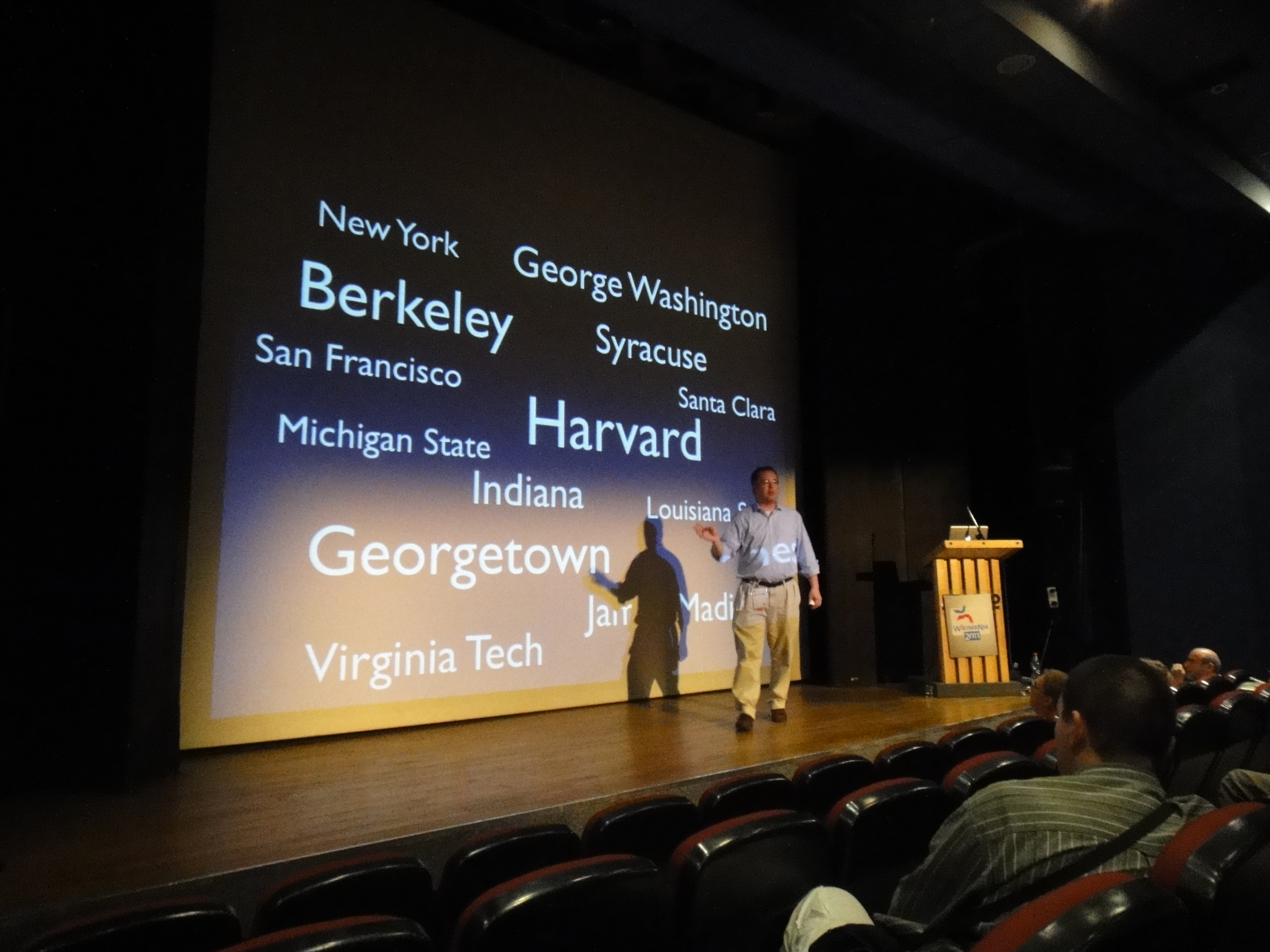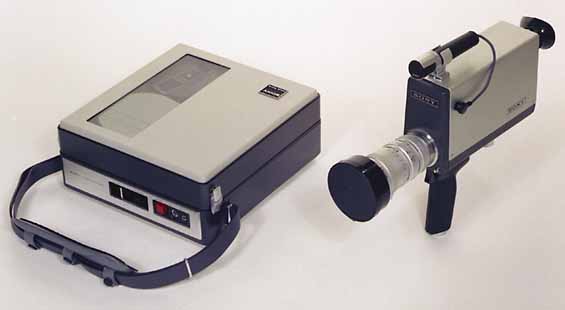|
PechaKucha
PechaKucha (Japanese: ぺちゃくちゃ, IPA: etɕa kɯ̥tɕa ''chit-chat'') is a storytelling format in which a presenter shows 20 slides for 20 seconds of commentary each. At a PechaKucha Night, individuals gather at a venue to share personal presentations about their work. The PechaKucha format can be used, for example, in business presentations to clients or staff, as well as in education settings. Inspired by their desire to "talk less, show more", Astrid Klein and Mark Dytham of Tokyo's Klein-Dytham Architecture (KDa) created PechaKucha in February 2003. It was a way to attract people to SuperDeluxe, their experimental event space in Roppongi, and to enable young designers to meet, show their work, and exchange ideas in 6 minutes 40 seconds. In 2004, cities in Europe began hosting PK Nights and days, followed over the years by hundreds of others. As of April 2019, PKNs had been held in more than 1,142 cities worldwide. More than 3 million people have attended a PK Night. P ... [...More Info...] [...Related Items...] OR: [Wikipedia] [Google] [Baidu] |
Ignite (event)
Ignite (Ignite Talks) is a series of events where speakers have five minutes to talk on a subject accompanied by 20 slides, for 15 seconds each, automatically advanced. Ignite started in Seattle, and it has spread to 350+ organizing teams in cities, universities, governments and companies who have hosted thousands of events. Ignite Talks is similar in its form to PechaKucha, a format founded 3 years earlier. The first Ignite was held in 2006 in Seattle, Washington by Brady Forrest and Bre Pettis, and was sponsored by O'Reilly Media and ''MAKE Make or MAKE may refer to: * Make (magazine), a tech DIY periodical *Make (software), a software build tool *Make, Botswana, in the Kalahari Desert *Make Architects Make Architects is an international architecture practice headquartered in Londo ...'' magazine. O'Reilly continued to support Ignite until November 2015 when the franchise was handed off to its founder, Brady Forrest, who formed Ignite Talks, PBC - a Public Benefit Corporat ... [...More Info...] [...Related Items...] OR: [Wikipedia] [Google] [Baidu] |
Speed Geeking
{{Unreferenced, date=February 2012 Speed geeking is a participation process used to quickly view a number of presentations within a fixed period of time. Speed geeking gets its name from speed dating, since they both employ similar techniques. Method A large room is selected as the speed geeking venue. All the presenters are arranged in a large circle along the edge of the room. The remaining members of the audience stand at the center of the room. Ideally there are about 6-7 audience members for each presenter. One person acts as the facilitator. The facilitator rings a bell to start proceedings. Once proceedings start, the audience splits up into groups and each group goes to one of the presenters. Presenters have a short duration, usually 5 minutes, to give their presentation and answer questions. At the end of the five minutes, the facilitator rings a bell. At this point, each group moves over to the presenter to their right and the timer starts once more. The session ends ... [...More Info...] [...Related Items...] OR: [Wikipedia] [Google] [Baidu] |
Photography
Photography is the art, application, and practice of creating durable images by recording light, either electronically by means of an image sensor, or chemically by means of a light-sensitive material such as photographic film. It is employed in many fields of science, manufacturing (e.g., photolithography), and business, as well as its more direct uses for art, film and video production, recreational purposes, hobby, and mass communication. Typically, a lens is used to focus the light reflected or emitted from objects into a real image on the light-sensitive surface inside a camera during a timed exposure. With an electronic image sensor, this produces an electrical charge at each pixel, which is electronically processed and stored in a digital image file for subsequent display or processing. The result with photographic emulsion is an invisible latent image, which is later chemically "developed" into a visible image, either negative or positive, depending on the purp ... [...More Info...] [...Related Items...] OR: [Wikipedia] [Google] [Baidu] |
Presentation
A presentation conveys information from a speaker to an audience. Presentations are typically demonstrations, introduction, lecture, or speech meant to inform, persuade, inspire, motivate, build goodwill, or present a new idea/product. Presentations usually require preparation, organization, event planning, writing, use of visual aids, dealing with stress, and answering questions. “The key elements of a presentation consists of presenter, audience, message, reaction and method to deliver speech for organizational success in an effective manner.” Presentations are widely used in tertiary work settings such as accountants giving a detailed report of a company's financials or an entrepreneur pitching their venture idea to investors. The term can also be used for a formal or ritualized introduction or offering, as with the presentation of a debutante. Presentations in certain formats are also known as keynote address. Interactive presentations, in which the audience is involved ... [...More Info...] [...Related Items...] OR: [Wikipedia] [Google] [Baidu] |
Japanese Business Terms
Japanese may refer to: * Something from or related to Japan, an island country in East Asia * Japanese language, spoken mainly in Japan * Japanese people, the ethnic group that identifies with Japan through ancestry or culture ** Japanese diaspora, Japanese emigrants and their descendants around the world * Japanese citizens, nationals of Japan under Japanese nationality law ** Foreign-born Japanese, naturalized citizens of Japan * Japanese writing system, consisting of kanji and kana * Japanese cuisine, the food and food culture of Japan See also * List of Japanese people * * Japonica (other) * Japonicum * Japonicus * Japanese studies Japanese studies (Japanese: ) or Japan studies (sometimes Japanology in Europe), is a sub-field of area studies or East Asian studies involved in social sciences and humanities research on Japan. It incorporates fields such as the study of Japanese ... {{disambiguation Language and nationality disambiguation pages ... [...More Info...] [...Related Items...] OR: [Wikipedia] [Google] [Baidu] |
Elevator Pitch
An elevator or lift is a wire rope, cable-assisted, hydraulic cylinder-assisted, or roller-track assisted machine that vertically transports people or freight between floors, levels, or deck (building), decks of a building, watercraft, vessel, or other structure. They are typically powered by electric motors that drive traction cables and counterweight systems such as a hoist (device), hoist, although some pump hydraulic fluid to raise a cylindrical piston like a hydraulic jack, jack. In agriculture and manufacturing, an elevator is any type of conveyor device used to lift materials in a continuous stream into bins or silos. Several types exist, such as the chain and bucket elevator, grain auger screw conveyor using the principle of Archimedes' screw, or the chain and paddles or forks of hay elevators. Languages other than English, such as Japanese, may refer to elevators by loanwords based on either ''elevator'' or ''lift''. Due to wheelchair access laws, elevators are ... [...More Info...] [...Related Items...] OR: [Wikipedia] [Google] [Baidu] |
Video Art
Video art is an art form which relies on using video technology as a visual and audio medium. Video art emerged during the late 1960s as new consumer video technology such as video tape recorders became available outside corporate broadcasting. Video art can take many forms: recordings that are broadcast; installations viewed in galleries or museums; works streamed online, distributed as video tapes, or DVDs; and performances which may incorporate one or more television sets, video monitors, and projections, displaying live or recorded images and sounds. Video art is named for the original analog video tape, which was the most commonly used recording technology in much of the form history into the 1990s. With the advent of digital recording equipment, many artists began to explore digital technology as a new way of expression. One of the key differences between video art and theatrical cinema is that video art does not necessarily rely on many of the conventions that define t ... [...More Info...] [...Related Items...] OR: [Wikipedia] [Google] [Baidu] |
Academia
An academy (Attic Greek: Ἀκαδήμεια; Koine Greek Ἀκαδημία) is an institution of secondary education, secondary or tertiary education, tertiary higher education, higher learning (and generally also research or honorary membership). The name traces back to Plato's school of philosophy, founded approximately 385 BC at Akademia, a sanctuary of Athena, the goddess of wisdom and Skills, skill, north of Ancient Athens, Athens, Greece. Etymology The word comes from the ''Academy'' in ancient Greece, which derives from the Athenian hero, ''Akademos''. Outside the city walls of Athens, the Gymnasium (ancient Greece), gymnasium was made famous by Plato as a center of learning. The sacred space, dedicated to the goddess of wisdom, Athena, had formerly been an olive Grove (nature), grove, hence the expression "the groves of Academe". In these gardens, the philosopher Plato conversed with followers. Plato developed his sessions into a method of teaching philosophy and in 3 ... [...More Info...] [...Related Items...] OR: [Wikipedia] [Google] [Baidu] |
Creativity
Creativity is a phenomenon whereby something new and valuable is formed. The created item may be intangible (such as an idea, a scientific theory, a musical composition, or a joke) or a physical object (such as an invention, a printed literary work, or a painting). Scholarly interest in creativity is found in a number of disciplines, primarily psychology, business studies, and cognitive science. However, it can also be found in education, the humanities (philosophy, the arts) and theology, social sciences (sociology, linguistics, economics), engineering, technology and mathematics. These disciplines cover the relations between creativity and general intelligence, personality type, mental and neural processes, mental health, artificial intelligence; the potential for fostering creativity through education, training, leadership and organizational practices; the factors that determine how creativity is evaluated and perceived; the fostering of creativity for national economic bene ... [...More Info...] [...Related Items...] OR: [Wikipedia] [Google] [Baidu] |






